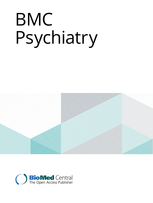
“It has been proposed that medicinal strains of cannabis and therapeutic preparations would be safer with a more balanced concentration ratio of Δ(9) -tetrahydrocannabinol (THC) to cannabidiol (CBD), as CBD reduces the adverse psychotropic effects of THC.
The aim of this study was to investigate whether CBD modulated the functional effects and c-Fos expression induced by THC, using a 1:1 dose ratio that approximates therapeutic strains of cannabis and nabiximols.
These data confirm that CBD modulated the pharmacological actions of THC and provide new information regarding brain regions involved in the interaction between CBD and THC.”
https://www.ncbi.nlm.nih.gov/pubmed/26377899
“A number of studies now support the view that cannabidiol (CBD) may reduce the negative psychotropic effects of THC while enhancing its positive therapeutic actions. Our results are consistent with the notion that cannabis plant strains that contain THC and CBD at 1:1 ratios may be preferable to street cannabis for medicinal applications because they maximize therapeutic efficacy while minimizing the adverse effects of THC.” https://bpspubs.onlinelibrary.wiley.com/doi/full/10.1111/bph.13333








